Factoring Binomials
I. OBJECTIVES
At the conclusion of this lesson you should be able to:
1. Factor the difference of two perfect squares.
2. Factor the sum or the difference of two cubes.
II. PROCEDURE
Put DVD 6 in and select Section 5.6 While watching the
DVD, follow this study
guide and take notes in the study guide as if you were sitting in a classroom.
Stop
or pause the DVD as needed to catch up or copy something down.
Perfect Squares

Difference of Two Perfect Squares
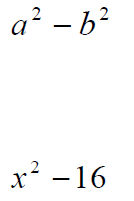
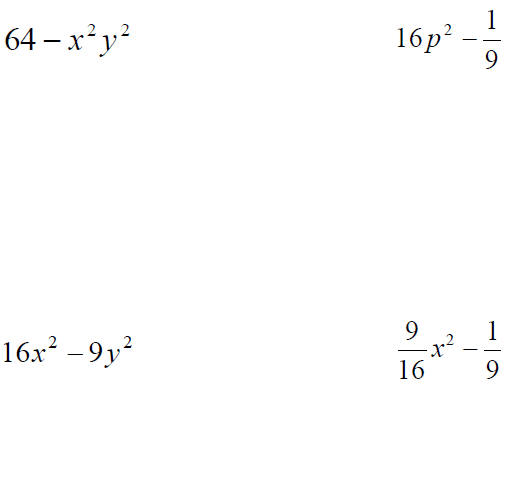

Sum of Two Perfect Squares

Perfect Cubes
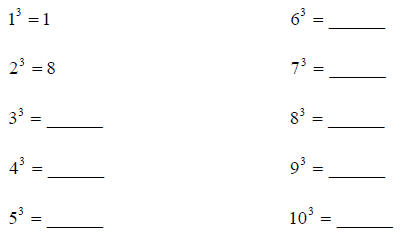
Perfect Cubes

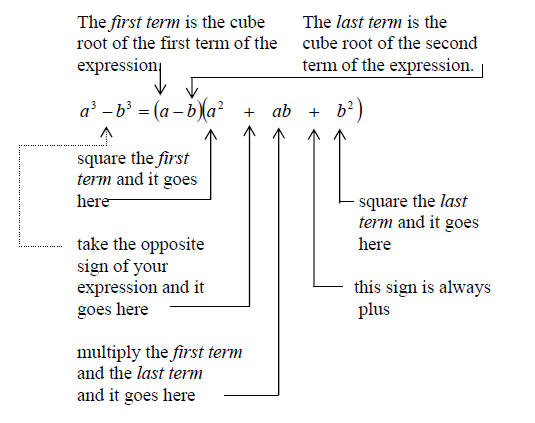

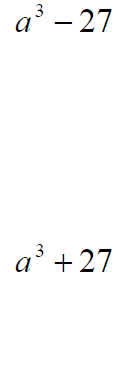
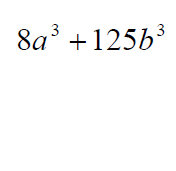
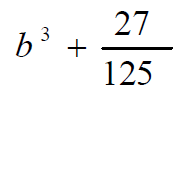
Steps for Factoring
1. Factor out the Greatest Common Factor. (GCF)
2. Count your number of terms.
| 2 Terms | Sum of Perfect Squares |
| Difference of Perfect Squares | |
| Sum of Cubes | |
| Difference of Cubes |
3 Terms {Trinomial
4 Terms {Factor by Grouping
3. Factor according to number of terms.
4. Multiply back to check.
STEPS FOR FACTORING
Step 1---Look for common factors (The Greatest Common Factor)
Step 2---Count the number of terms and factor accordingly
a. Two terms
•Sum of Squares

•Difference of Squares

•Sum of Cubes

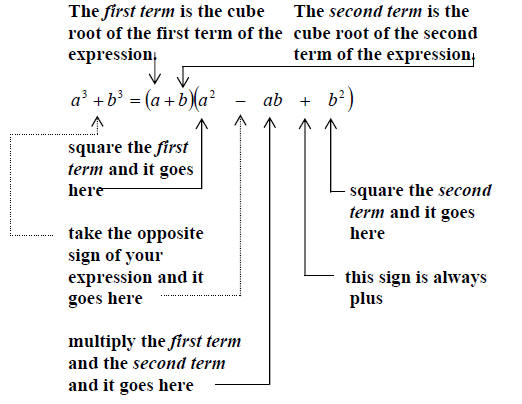
•Difference of Cubes

apply the rules for sum of cubes
b. Three terms—Use the “AC (Grouping) Method” or “Trial and Error”
|
SIGNS FOR FACTORS |
||
| MIDDLE TERM | LAST TERM | SIGNS |
| + (positive) | + | both + |
| - (negative) | + | both - |
| + (positive) | - | one +, one – larger + |
| - (negative) | - | one +, one – larger - |
c. Four terms – factor by grouping
Group by pairs, factor out common factors.


